Intro
Imagine having a peaceful, self-sustaining pond right in your backyard, filled with colorful fish, lush plants, and buzzing insects all working together to create a balanced environment. This is the magic of an ecosystem backyard pond. Unlike a regular pond, which might need constant care, an ecosystem pond naturally takes care of itself.
It creates its own healthy water cycle, cleans itself, and even provides a home for wildlife. Whether you’re looking to enhance your garden, attract local creatures, or enjoy the beauty of nature, an ecosystem pond offers a simple, beautiful solution to transforming your outdoor space
Ecosystem Backyard Pond
What Is An Ecosystem Backyard Pond and How Is It Different?
So, you’ve probably seen those picturesque backyard ponds on Pinterest or Instagram, right? A calm pond surrounded by lush greenery, fish swimming happily, and vibrant flowers adding a splash of color. But have you ever wondered what makes an ecosystem backyard pond special compared to a regular pond?
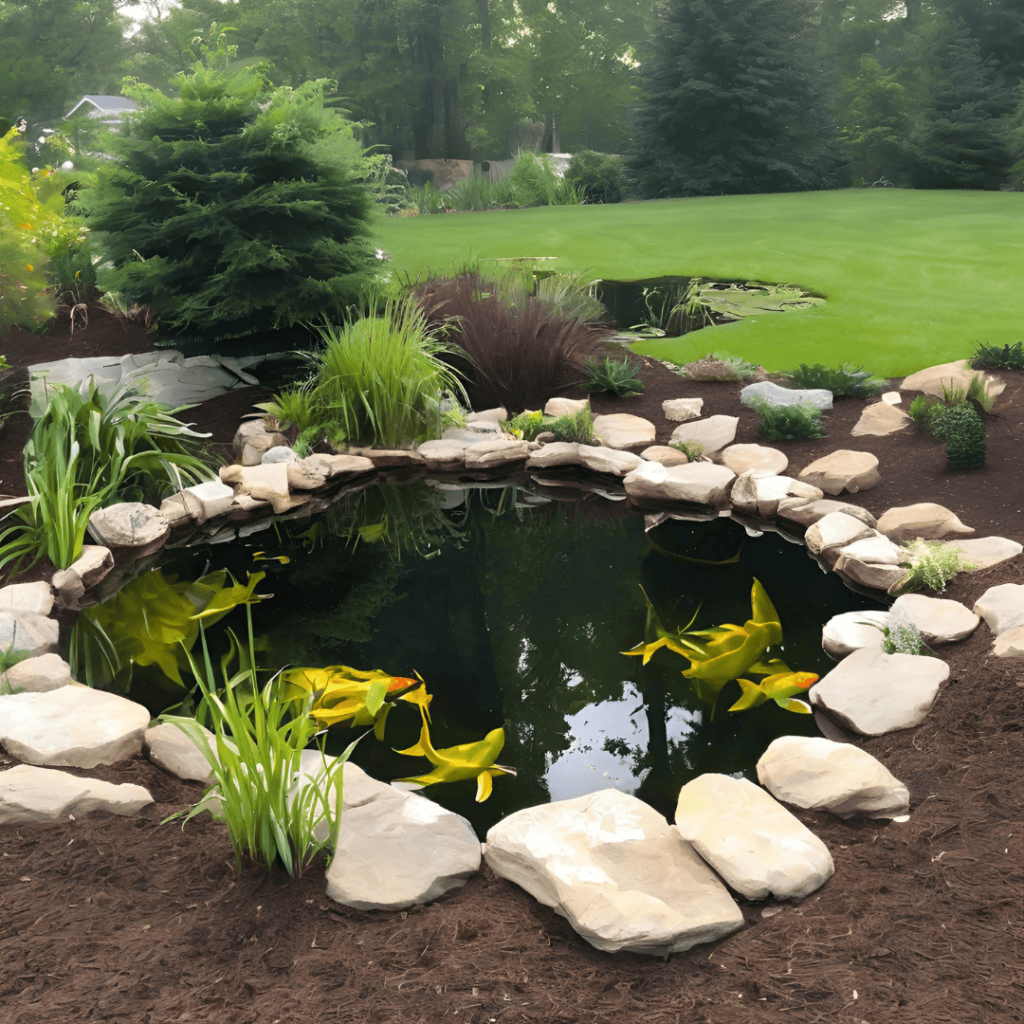
Well, an ecosystem backyard pond isn’t just a pretty water feature it’s a self-sustaining mini-ecosystem right in your own backyard! What makes it different from a regular pond is that it maintains balance naturally, without a lot of intervention from you.
In a typical pond, you might need to constantly monitor and clean it, dealing with dirty water, algae blooms, and fish that seem to be struggling.
But in an ecosystem pond, everything works together plants, animals, bacteria, and even the water itself to keep things balanced. It’s like having a little piece of nature that takes care of itself, without the stress!
In this guide, we’ll explore how an ecosystem backyard pond works, what makes it unique, and how you can build one yourself. Ready to dive in? Let’s get started!
What’s in a Backyard Ecosystem Pond?
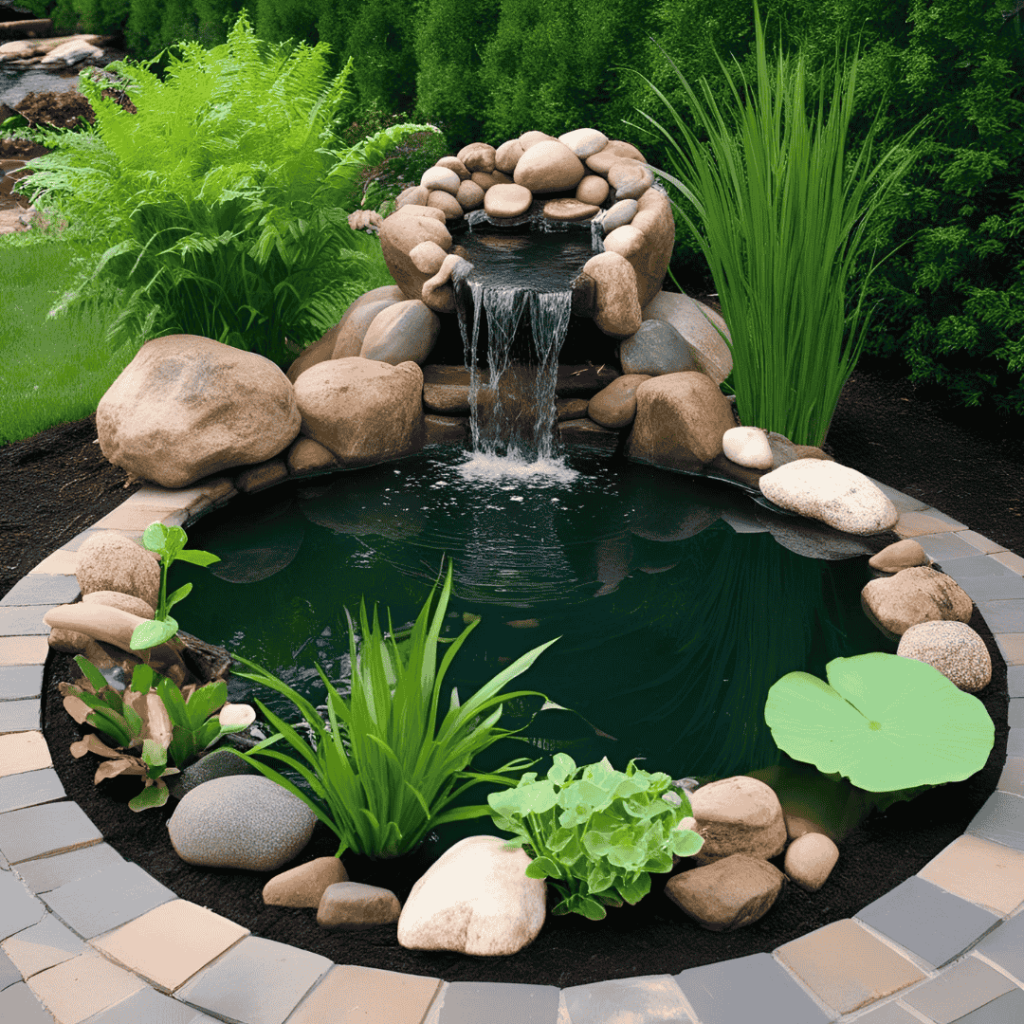
An ecosystem pond is more than just water; it’s a community of plants, animals, and organisms working together. Just like in nature, everything has a role, and when all the parts work together, they keep the system healthy and vibrant. Think of it like a well-coordinated team, where everyone pulls their weight!
Here’s a breakdown of the key components that make up an ecosystem backyard pond:
Water
Let’s start with the most obvious water! Without water, there wouldn’t be an ecosystem pond at all. The quality of the water is crucial in maintaining a balanced environment. Water in an ecosystem pond is typically clear, oxygen-rich, and free from pollutants.
Good water quality is the foundation of a healthy pond, so keeping it clean is essential. But don’t worry, you don’t need to be a water scientist. The plants and microorganisms in the pond naturally filter the water for you, keeping it fresh and balanced.
Pond Filtration
Now, you might be thinking, “Do I need a fancy filtration system?” Well, the answer is… not really! An ecosystem pond relies on natural filtration rather than mechanical filtration.
In this system, the plants, beneficial bacteria, and algae work together to filter out excess nutrients, break down waste, and keep the water clear. The rocks and gravel at the bottom of the pond also help with filtration by providing a home for beneficial bacteria.
That said, you might still want to use a small pump or filter to ensure that the water circulates well, but the beauty of an ecosystem pond is that the natural processes do most of the work.
Aquatic Plants
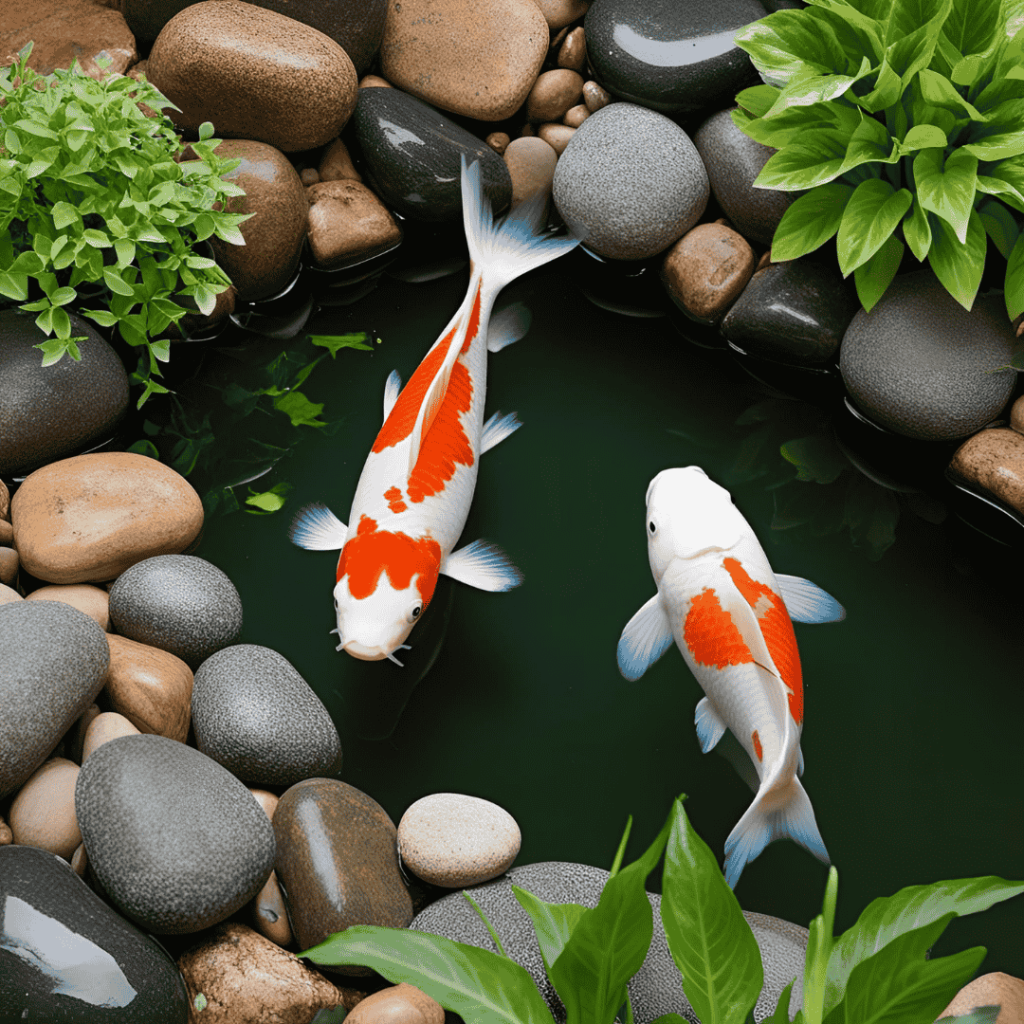
Plants are the unsung heroes of any backyard pond. They play an essential role in keeping your pond’s ecosystem balanced. Aquatic plants absorb nutrients from the water, helping to prevent algae overgrowth (more on that later!). They also provide oxygen, which is crucial for fish and other pond animals to thrive. Additionally, they offer shelter for fish and other critters, and they’re beautiful to look at!
Some common aquatic plants include water lilies, lotus flowers, cattails, and submerged plants like anacharis. You’ll want to have a mix of floating, submerged, and emergent plants to create a healthy, diverse pond environment.
Algae
Algae. It’s the love-hate relationship we all have with water gardens. Algae are natural inhabitants of any pond, and in an ecosystem pond, they play a role in the food chain. However, if left unchecked, algae can quickly take over and cause murky water.
But don’t panic! A little algae is perfectly normal and even beneficial, as it helps with oxygen production and provides food for pond creatures. The key is balance too much algae can cloud the water, and too little might not provide enough nutrients for your pond’s creatures. You can control algae naturally by maintaining a good balance of plants, animals, and water circulation.
Rocks & Gravel
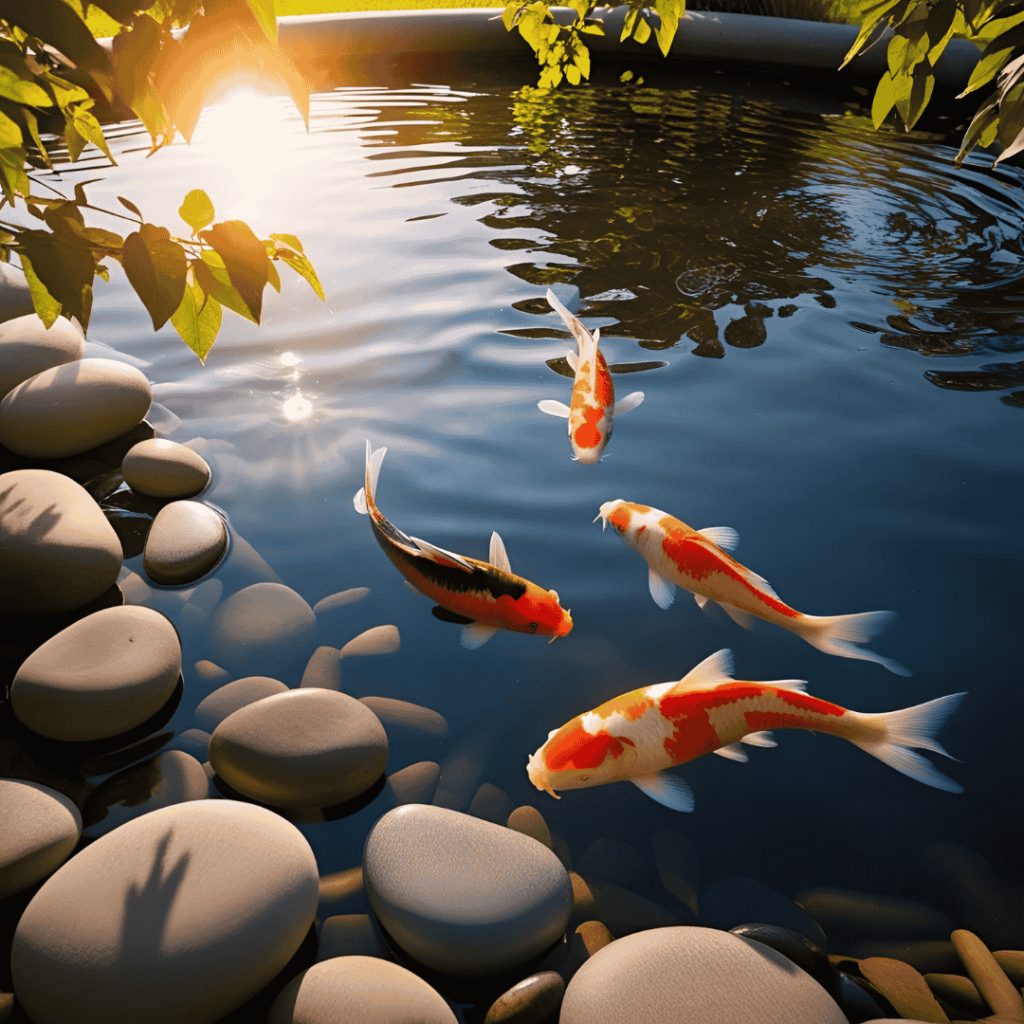
If you’ve ever looked at a pond and noticed the stones lining the bottom, you might have wondered if they’re just for decoration. While they do look pretty, rocks and gravel in an ecosystem pond serve a much more important purpose. They provide a surface for beneficial bacteria to grow, helping with natural filtration.
The rocks also help stabilize the pond by preventing soil erosion and providing hiding spots for fish and other critters. Plus, they give your pond a more natural, authentic look like something straight out of the wilderness!
Pond Animals
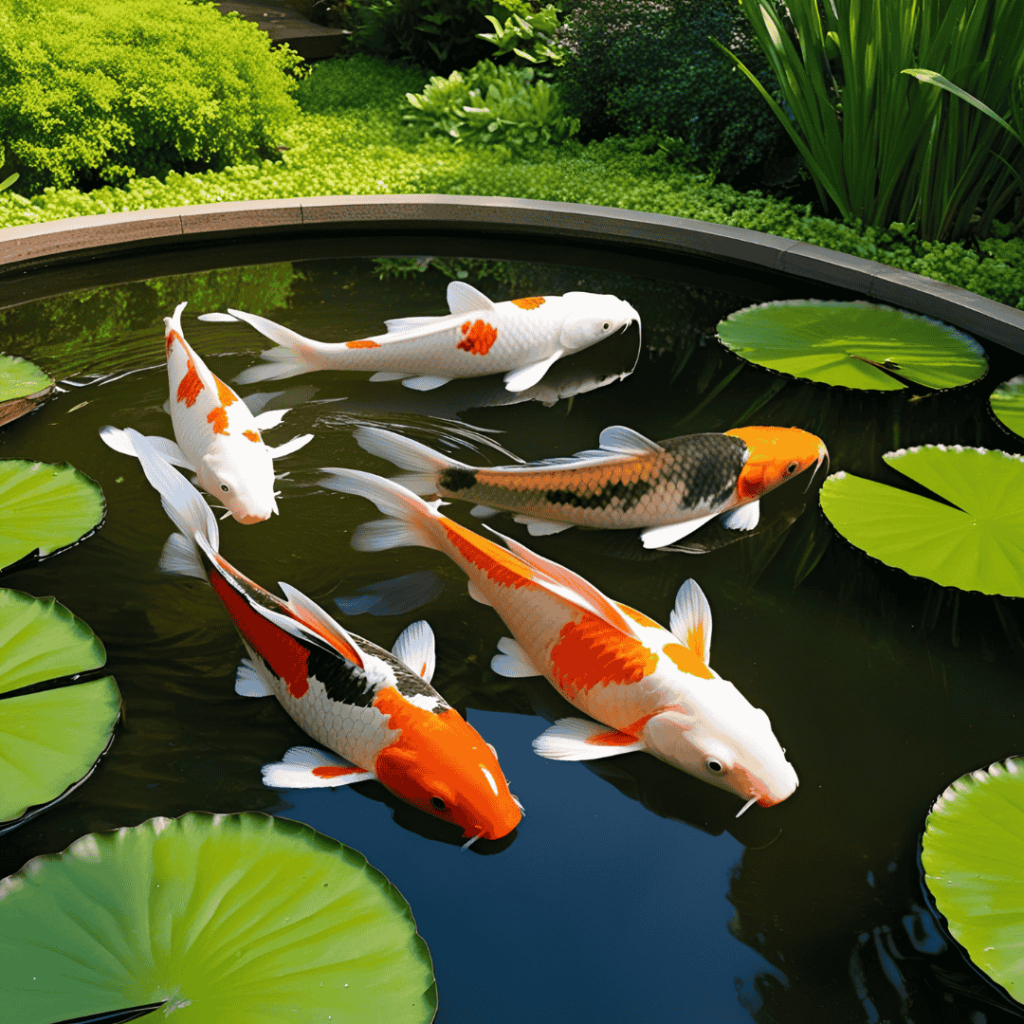
Fish, frogs, dragonflies, and snails these are the animals that make your pond come alive. They all play vital roles in maintaining a balanced ecosystem.
Fish like goldfish or koi help control mosquito larvae, while frogs and other amphibians eat insects and provide a natural source of food for birds and other wildlife. Dragonflies are fantastic predators that help control pest populations, and snails help break down decaying plant material.
Having a mix of animals in your pond adds to the beauty and diversity of the ecosystem. But be careful not to overcrowd it more on that in a minute!
Other pond animals can include:
Other types of pondfish
- Turtles
- Birds
- Frogs
- And more!
It’s Possible to Have Too Much
While having a pond full of plants and animals sounds like a dream, it’s possible to have too much of a good thing. Overcrowding your pond with too many fish or plants can disrupt the balance of the ecosystem. Too many fish can lead to too much waste, which can cause water quality issues and promote algae growth. Similarly, overcrowding with plants can block sunlight and prevent other plants from growing properly.
When designing your pond, think about the size of your space and how many plants and animals it can support. The goal is to create a thriving, balanced environment, not an overstuffed aquarium.
Enjoy Your Personal Ecosystem
One of the best parts of having an ecosystem backyard pond is that you get to enjoy the beauty and serenity of a natural water feature in your own backyard. Watching fish swim, frogs croak, and dragonflies flutter around can be incredibly peaceful. Plus, you’ll get to see how nature interacts and thrives right before your eyes.
Take time to relax by your pond, observe the wildlife, and watch the plants grow. It’s not just a pond it’s your very own slice of nature, a little piece of peace and calm in your busy life.
Building a Backyard Ecosystem
If you’re thinking about building your own ecosystem pond, the good news is that it’s easier than you think! Start by choosing the right location. Your pond should get enough sunlight to encourage plant growth, but it shouldn’t be in full sun all day, as this can lead to overheating and algae issues. Next, decide on the size of the pond. A small pond may only require a few plants and fish, while a larger pond may need a more complex system of plants and filtration.
Make sure to include rocks, gravel, and aquatic plants for natural filtration. Add fish, amphibians, and insects to help create a balanced ecosystem. And remember, a little bit of maintenance goes a long way to keep things running smoothly.
What Comprises a Backyard Ecosystem?
A backyard ecosystem includes everything that makes up a balanced environment: the water, plants, animals, and microorganisms. All of these elements work together to create a healthy and self-sustaining system. By paying attention to each component and making sure everything is in balance, you’ll have a thriving ecosystem right in your backyard.
Turning Your Yard Into a Backyard Ecosystem
If you’ve got a bit of space, turning your yard into a backyard ecosystem is easier than you think. You don’t need a massive garden or complex equipment just some planning, a little effort, and some patience. Start small, and as you learn, you can add more elements to your ecosystem. You’ll be amazed at how quickly your pond becomes a haven for wildlife, all while looking beautiful in your yard.
Being a Good Steward of Your Backyard Ecosystem
Being a good steward of your backyard pond means caring for the environment you’ve created. It’s about being mindful of the plants and animals, managing the water quality, and making sure everything works in harmony. Check your pond regularly for any signs of imbalance, and make adjustments as needed. A little care goes a long way in keeping your ecosystem healthy and thriving.
Faqs
1. What is an ecosystem backyard pond?
An ecosystem backyard pond is a self-sustaining water feature that includes plants, animals, and microorganisms working together to keep the environment healthy and balanced.
2. Do I need a filter for my ecosystem pond?
Typically, no. An ecosystem pond relies on natural filtration through plants, rocks, and bacteria. However, a small pump may help with water circulation.
3. What types of plants should I include?
Include a mix of submerged plants, floating plants, and emergent plants like water lilies, cattails, and anacharis to create a balanced ecosystem.
4. Can I have too many fish in my pond?
Yes, overcrowding can cause water quality issues and disrupt the balance. Make sure to consider your pond’s size before adding fish.
5. How do I maintain my pond?
Monitor water quality, trim plants, and check for algae or pests. Regular observation is key to keeping
conclusion
An ecosystem backyard pond is a unique, self-sustaining water feature that brings the beauty and balance of nature to your own backyard. By incorporating water, plants, animals, and beneficial microorganisms, this type of pond creates a harmonious environment where all elements work together to maintain health and cleanliness.
With minimal maintenance, you can enjoy the aesthetic and environmental benefits of a thriving pond while offering a habitat for local wildlife. Whether you’re looking to enhance your garden, attract wildlife, or simply enjoy a peaceful retreat, building and caring for an ecosystem pond is a rewarding experience that’s both easy and enriching.




